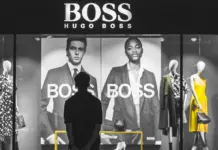Retailers in the United States are estimating that 15.8% of their total annual sales will be returned this year, amounting to approximately $849.9 billion, according to the latest Retail Returns Landscape report released by the National Retail Federation (NRF) in collaboration with Happy Returns, a UPS company. This return rate remains consistent with last year’s figure of 16.9%, which saw total returns reach $890 billion.
“Returns are no longer the end point of a transaction,” stated Katherine Cullen, NRF’s Vice President of Industry and Consumer Insights. “They provide an opportunity for retailers to create a positive experience for customers and can translate to brand loyalty. Retailers are constantly evolving and working to meet customer expectations, and they recognize the importance the returns process plays.”
While overall return rates may remain stable, certain sectors are facing more pressure than others. The report indicates that approximately 19.3% of online sales in the U.S. are projected to be returned in 2025.
As Generation Z continues to exert its influence, their behavior significantly impacts return rates in the U.S. Consumers aged 18 to 30 reported making an average of 7.7 returns of online purchases over the past year, more than any other age group.
Consumer expectations regarding returns are increasing. The availability of free returns is a significant motivator for shoppers, with 82% indicating it as a key factor in their purchasing decisions, an increase from 76% the previous year. Additionally, 76% of consumers prefer return options that offer instant refunds or exchanges, highlighting the importance of efficiency.
However, a negative returns experience can deter future purchases. Approximately 71% of U.S. consumers report they would be less likely to shop with a retailer again after encountering a poor returns process, up from 67% in the previous year. Furthermore, 80% of consumers indicated they would share their negative experiences with friends and family, amplifying the potential fallout for retailers.
In the U.S., retailers must navigate the challenge of balancing customer expectations and expanding online sales with the rising operational costs associated with returns, as well as external pressures like tariffs. Retailers surveyed in the report identified their top goals for 2026 as increasing online sales and reducing return rates. The main reasons for implementing charges for returns include rising operational costs for processing returns (40%), higher carrier shipping costs (40%), and concerns about economic uncertainty and potential tariffs (33%). Notably, nearly two-thirds (64%) of merchants rank updating their returns process as a priority within the next six months.
Return fraud continues to pose a significant challenge in the U.S. retail industry, with the report revealing that 9% of all returns are fraudulent. Retailers tracking these incidents noted increases in tactics such as inflated return quantities (71%), returning empty boxes or “boxes of rocks” (65%), and decoy returns involving counterfeit products (64%). Technology, particularly artificial intelligence, is gaining traction as a tool to confront these issues, with 85% of retailers employing AI for fraud detection and prevention.
Younger consumers in the U.S. are also engaging in return behaviors that can be costly for retailers. Nearly two-thirds admit to participating in at least one behavior that incurs extra costs, such as “wardrobing” or “bracketing,” where they return different items or empty packages. Just under half (45%) of consumers believe it is acceptable to “bend the truth” when returning items, especially if they are dissatisfied with their purchase.
“Return policies and their overall process have transformed into a strategic touchpoint for retailers, influencing how younger consumers shop from the outset,” remarked David Sobie, co-founder and CEO of Happy Returns. “To remain competitive amid rising return rates and behaviors like bracketing, retailers must modernize their reverse logistics to enhance customer satisfaction, reduce fraud, and protect their operations in today’s challenging retail environment.”
Looking ahead to the winter holiday season, the U.S. report indicates that retailers expect a return rate of 17% on holiday sales, consistent with previous years. To manage holiday returns and mitigate fraudulent activities, retailers plan to increase their focus on partnerships with third-party logistics providers (49%), hire seasonal staff to handle returns (43%), and extend return windows (37%).
Overall, the retail returns landscape in the U.S. presents both challenges and opportunities as retailers adapt to evolving consumer expectations and aim to streamline their processes.


































